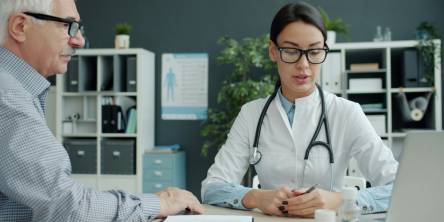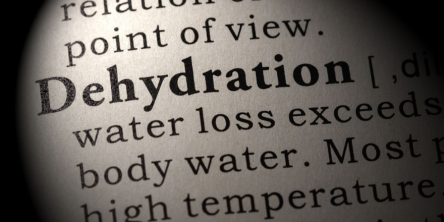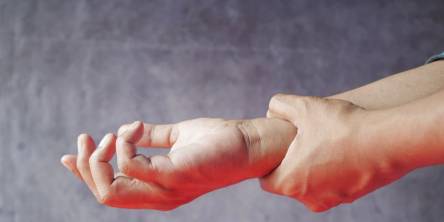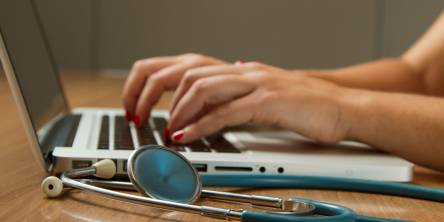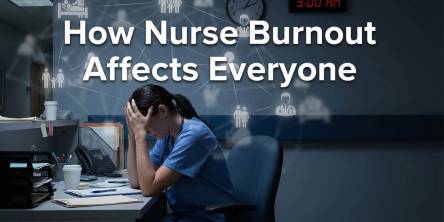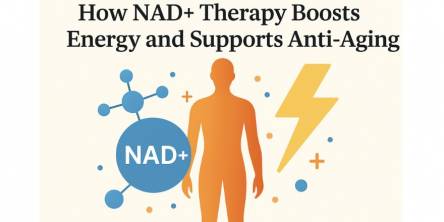Common Liver Problems and Tips to Prevent Liver Disorders
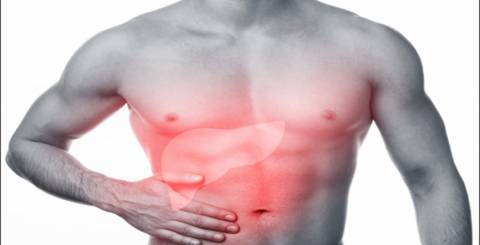
ABSTRACT
The liver is one of the largest organs present in the body which performs various functions of the body. In adults, the normal weight for lier is around 1400 to 1600 gm but can also vary in every individual. It is surrounded by fibrous connective tissue and is found on the right side of the upper quadrant of the abdomen. The liver has four lobes which include the left and right lobe along with smaller quadrate and caudate lobes. The upper border of the liver lies at the level of the nipples and the lower border to the oblique line connecting to the constable cartilage of the 8th left rib and 9th right rib. The liver is one of the organs which is damaged most frequently and today in this article we are going to discuss the organ liver in detail. Along with that some preventive tips to maintain the good health of the liver.
Anatomy of Liver
From an anatomical point of view, the liver is located in the right hypochondriac and epigastric region of the abdomen which is extended to the left hypochondrium region. There are basically two surfaces present on the liver which includes the Diaphragmatic surface also known as the anterosuperior surface which is smooth and convex, present beneath the curvature of our diaphragm while the posterior surface is directly in contact with the diaphragm itself.
Another one is the Visceral surface is the posteroinferior surface and is covered with the peritoneum. This surface is irregular in shape as it is molded in the shape of the surrounded organ and is in contact with the right adrenal gland, right kidney, transverse colon, right colic flexure, gallbladder, esophagus, the first part of the duodenum, and the stomach.
Ligaments of the Liver
There are different ligaments that are connected to the liver and are covered with the double layer of the peritoneum.
1. Coronary ligament
This ligament helps in attaching the anterior surface of the liver to the abdominal wall of the inferior part. This ligament separates the bare area of the liver and the posterior and superior folds end together to form triangular ligaments which are the right and left lobes of the liver.
2. Falciform ligament
Attaches the anterior abdominal wall to the anterior surface area of the liver forming a natural division between the right and left lobe of the liver.
3. Triangular ligaments
They are divided into two parts right and left side
4. The right triangular ligament
attaches the right lobe liver with the diaphragm and is in contact with the bare area.
5. The left triangular ligament
Is formed from the connection of the posterior and anterior layer of the coronary ligament present at the apex. It helps in connecting the left lobe to the diaphragm.
6. Lesser omentum
This ligament helps in attaching the liver to the lesser curvature of the stomach and also the first part of the duodenum. It consists of parts like the hepatogastric ligament which extends from the stomach to the liver, Hepatodudenal ligament which runs from the stomach to the liver.
7. Hepatic Recesses
Subhepatic space which is located between the transverse colon and inferior surface of the liver
Subphrenic space is located between the diaphragm and the superior as well as the anterior part of the liver. They are then divided into left and right forming the falciform ligament.
Morison’s pouch is a space present between the right kidney and the visceral surface of the liver.
The anatomical structure of the liver
Macroscopically there are two-lobe first is the Caudate lobe present on the visceral surface and the Quadrate lobe present on the lower part of the visceral surface.
Microscopically the cells present in the liver are known as hepatocytes and have three parts including Arteriole, Bile duct, and Venule.
Metabolism of Bilirubin In Liver
Bilirubin is the insoluble waste product of the body made from the breakdown of hemoglobin and other bile pigments. It is important that bilirubin is formed into water-soluble before excretion and the transformation of unconjugated and conjugated is done in five steps which includes:-
Formation of bilirubin
250 to 350 mg of unconjugated bilirubin is daily formed and 70 to 80 percent of bilirubin is derived from the breakdown of degenerated red blood cells, other 20 to 30 percent is taken from the heme protein present in the liver and bone marrow. Hemoglobin is formed from two elements heme and globin, the Globin is then broken down into amino acids. While the haem is broken down to form iron and biliverdin, during this process it is catalyzed to form haem oxygenase, the biliverdin is reduced to form unconjugated bilirubin.
Conjugation of Bilirubin
When the bilirubin comes into the colon, the bacteria present in it helps the deconjugate bilirubin to convert into urobilinogen. Most of the urobilinogen is oxidized into the intestine which is then converted into stercobilin and then it is excreted through the feces. Stercobilin is the one that gives the stool its color.
Normally 20 percent of the urobilinogen is reabsorbed by the bloodstream and is part of the enterohepatic circulation. This is then carried into the liver and recycled for the production of bile, only some of the bile reaches the kidney. Here it is further oxidized which is then excreted into the urine.
Bilirubin excretion
When the bilirubin comes into the colon, the bacteria present in it helps the deconjugate bilirubin to convert into urobilinogen. Most of the urobilinogen is oxidized into the intestine which is then converted into stercobilin and then it is excreted through the feces. Stercobilin is the one that gives the stool its color.
Normally 20 percent of the urobilinogen is reabsorbed by the bloodstream and is part of the enterohepatic circulation. This is then carried into the liver and recycled for the production of bile, only some of the bile reaches the kidney. Here it is further oxidized which is then excreted into the urine.
Dosage: 2 teaspoon two times daily after meals.
Function of Liver
The liver is one of the essential organs present in our body and helps in performing 500 vital functions of the body. This mainly includes the removal of waste products and foreign material from the blood which in turn helps in regulating the blood sugar levels.
Here some of the important functions of the liver
Production of Albumin
It is a protein formed in the liver which helps in maintaining the fluid present in the bloodstream and stops them from leaking into the tissue. It helps in carrying the various other substances throughout the body like vitamins, enzymes, and hormones. The normal levels of albumin present in the liver are 3.4 to 5.4 g/dL.
Production of Bile
The normal amount of bile produced by the human body is 400 to 800 ml every day. Bile acid is important for digestion and for the absorption of fat-soluble vitamins in the small intestine.
Filtering blood
All the blood that is leaving the intestine and stomach is passed through the liver which helps in removing the toxins, by-products, and other harmful substances from the blood.
Regulating amino acids
Amino acid is responsible for producing protein and the liver makes sure that the levels of amino acid remain healthy in the body.
Regulated blood clotting
The blood clotting coagulants are produced by the use of Vitamin K nutrients that can be absorbed with the help of bile, a fluid found in the liver.
Protects from infections
In the process of filtration, the liver helps in removing any kind of bacteria from the blood.
Stores Minerals and Vitamins
The liver plays a very important role in storing nutrients like Vitamin A, D, E, K, and B12 along with that it also stores copper and iron.
Processing Glucose
The liver helps in removing an excessive amount of glucose or sugar from the bloodstream which is then stored in the form of glycogen.
General symptoms noted in Liver problems
The symptoms may vary according to the cause of the disease. However common signs noted in liver disease are
- Skin and eyes become yellow
- Urine becomes dark
- Black stool
- Swelling of legs, ankles, and abdomen
- Vomiting
- Nausea
- Diminished Appetite
- Skin becomes itchy
- Easily gets bruised
Common Liver Problems
Here are some common conditions are seen in patients who suffer from liver disease and this includes
Hepatitis:- It is a viral infection of the liver that results in inflammation of the organ and reduces the functioning of the liver. There are five types of Hepatitis and each of them is contagious. It can easily spread through infected needles or unprotected sex.
Five Types
Hepatitis A:- It is typically caused by the contaminated food or water and symptoms may clear up within a few weeks of treatment.
Hepatitis B:- It can be both acute or chronic and is spread through the body fluid including the semen and blood. There is no specific cure for it.
Hepatitis C:- This can be both acute or chronic and is spread through the blood and in later stages, it causes damage to the liver.
Hepatitis D:- It is one of the serious forms and is contracted on its own.
Hepatitis E:- It is caused by drinking water that is contaminated and lasts for only a few weeks.
Fatty liver:- It is caused when the fat starts to build up in the liver and there are two types of fatty liver including alcoholic fatty liver caused by heavy consumption of fatty liver and non-alcoholic fatty liver caused by other factors. If left untreated it results in liver cirrhosis and liver failure.
Cirrhosis: - This mainly means the scarring of the liver which is caused due to some liver disorders or due to heavy intake of alcohol. Syphilis and Cystic fibrosis are also the causes resulting in liver damage and eventually resulting in cirrhosis. The liver is capable of regeneration in response to damage but this process sometimes results in the formation of scar tissue on the liver. The more the scar the harder the liver gets making the function of the liver difficult.
Liver failure: - Chronic liver failure is caused when the liver is damaged and is not able to work properly resulting in liver failure. Generally, common symptoms seen are Jaundice, confusion, nausea, and weakness.
How We Are Damaging the Liver
1. Consumption of Alcohol
Each body has a different reaction to heavy consumption of alcohol but drinking a large amount of alcohol makes the liver work harder. If the liver cells work hard then it might cause some damage to the liver. This may result in two conditions like fibrosis of the liver and sometimes liver cirrhosis. It is better to drink alcohol in a moderate amount to reduce the risk of developing any kind of illness.
2. Not Drinking water
Water is one of the essential fluids needed by our body which helps in removing toxins from the body. As 75 percent of our body is made from water and not drinking water results in dehydration. The liver needs an adequate amount of water in order to work properly and less amount of water results in liver problems. Consumption of water helps in maintaining good health and dehydration increases the risk of illness.
3. Smoking tobacco
Smoking does not only cause lung cancer but also liver cancer. Smoking tobacco causes a burning effect on the liver. The smoke produced by tobacco results in oxidative stress which pressurizes the liver to remove toxins from the blood. This then releases chemicals that are harmful to the body and in the end cause liver cancer.
4. Obesity
Being overweight results in too much production of adipose tissue or fat cells. These cause the liver to release toxic proteins that are harmful to the tissue present in the liver. The damage caused by Obesity is similar to the liver damage caused by consumption of Alcohol.
5. High Sugar Diet
Adding too much sugar to the diet is harmful to the system of the body. The liver is responsible for the metabolism of glucose and taking too much sugar can result in the accumulation of fat in the liver. All the cells present in the body help in taking care of glucose molecules while liver cells are the only ones controlling the levels of fructose. Fructose is present in fried foods, processed foods, colas, etc. Frequent consumption of foods rich in fructose results in liver damage that is irreversible. It is better to consume natural sugars and avoid junk or processed foods.
6. Heavy trans-fat in the diet
Almost all fast food or processed foods have high levels of trans fat in them. This trans-fat is responsible for increasing the levels of bad cholesterol (LDL) in the body and resulting in heart problems and trans fat is also responsible for reducing the levels of good cholesterol (HDL). Trans-fat is commonly found in baked foods, fried foods, microwave popcorn, and pre-packed foods.
7. Eating heavy Dinners
The liver does not work properly at night and eating heavy foods before bedtime produces extra pressure on the liver resulting in liver damage. So Dinners that are rich in shortening, canola oil and heavy seasoning are very harmful to the liver. It is better to consume beetroots and carrots in the evening.
8. Unsafe sex
People who indulge in unprotected sex are more at risk of developing the disease related to the liver. The person is higher at risk of having hepatitis which is a dangerous liver disease and can be easily contracted through sexual intercourse.
9. Stressful lifestyle
Having a stressful life for a long period of time can cause damage to the liver. It has been researched that the emotions like anger or stress are linked to the organ and can often lead to permanent damage. Studies have found a connection between death and psychological stress.
10. Sedentary lifestyle
Performing daily exercise is one of the ways to maintain the overall health of the person and it specifically helps in making the liver healthy. Burning some calories results in perspiration which is helpful in detoxifying the body. Exercising every day for one or half an hour is enough for keeping you in good shape.
Healthy Tips to Maintain the Good Health of Liver
Here are the ways to fight liver disease and to maintain the good health of the liver
- Try to maintain a healthy weight because being overweight puts you in danger of developing fatty liver that can also result in non-alcoholic fatty liver disease. Maintaining a good weight is one of the important ways which will help in reducing the risk of fatty liver.
- Eating a balanced diet is important and avoiding foods that are high in calories, refined carbohydrates, saturated fats, and sugars. Avoid eating shellfish that are raw or undercooked.
- Include foods that are rich in high fibers that you can easily obtain from vegetables, fresh fruits, rice, cereals, and whole-grain bread.
- Avoid the consumption of red meats and include dairy products that are made from low-fat milk.
- Include good fats in the diet that are rich in polyunsaturated and monounsaturated fats like nuts, seeds, fish and vegetable oils.
- Exercise on a regular basis will help you burn triglycerides for fuel and in turn, it will reduce the risk of developing fatty liver.
- Avoid getting in contact with harmful toxins like insecticides, chemicals, aerosol products, and additives. Always wear a mask and try avoiding smoking tobacco.
- Avoid getting in contact with any kind of contaminated needles and it is not only associated with the use of intravenous drugs. Always use clean needles for piercing or tattoos.
- Never share your personal items like toothbrushes, nail cutters, or razors as they may carry blood and other fluids at microscopic levels that can be contaminated.
- Always perform safe sex as unprotected sex or intercourse with multiple partners will increase the risk of having Hepatitis B or C.
- Drink an adequate amount of water throughout the day as it is important
Some healthy food that is good for the liver
- Grapefruits are high in antioxidants like naringin and naringenin that will help in protecting the liver naturally. They are excellent in reducing the development of hepatic fibrosis and also removes others.
- Blueberries and cranberries contain antioxidants and anthocyanins which give them distinctive colors and are very beneficial for health.
- Beetroot juice is a high source of antioxidants called betalains and nitrates that are not only beneficial for the heart. They reduce the risk of inflammation or oxidative damage and also increase the good enzymes that are helpful in detoxification.
- Cruciferous vegetables like broccoli, Brussel sprouts, and mustard greens are rich in fibers by removing toxins and protecting them from getting damaged.
- Fatty fish that are rich in omega-3 fatty acids are helpful in reducing inflammation and very beneficial for maintaining the good health of the liver.
- Instead of using canola oil use olive oil that is very good for metabolism and everyday consumption of olive oil will improve the liver enzyme. It reduces the accumulation of fat in the liver and improves the circulation of blood in the liver.
- Include nuts in the diet as they are rich in Vitamin E and helps in improving the levels of enzymes in the liver.
- Drink Green tea instead of regular chase because green tea helps in reducing the risk of non-alcoholic fatty liver. Green tea is high in antioxidants and helps in reducing oxidative stress.
- Include Oatmeal as they are rich in fiber and helps in improving the metabolism because they are rich in a compound known as beta-glucans. The compound is better known for fighting any kind of inflammation and fighting against obesity and diabetes as well. According to researchers oatmeal helps in reducing the storage of fat in the liver.
Conclusion
The liver is one of the most important parts of our body which is doing most of the work of our body from good metabolism to excretion. So, it is our duty to maintain the health of the liver and keep them away from harmful material. All the information given above tells you how you are putting yourself in danger and some tips that you must follow to prevent yourself from liver disorders. “Love the liver and live longer”.
Similar Articles
Explore the biggest health trends that shaped 2025, from personalized nutrition to matcha and recovery—plus what wellness trends are coming in 2026.
Winter is a season when the body needs extra nourishment, warmth, and immunity support. According to Ayurveda and modern nutrition science, dry fruits play a vital role in maintaining health during cold weather.
Most people think health problems start suddenly. One day you feel fine, the next day something is wrong. In reality, most health issues develop slowly .They grow quietly in the background while life keeps moving.
The start of a new year is a natural time to pause, reflect, and think about how you want to feel in the months ahead. For those over 60, a fresh start does not mean setting unrealistic resolutions or making drastic changes.
Picture this: You're parked at your workspace, battling to focus on what should be a straightforward five-minute task. That afternoon slump? It's demolishing you today.
Joint pain and arthritis are common health issues that tend to become more intense during the winter season
Discover the benefits, challenges, and future of locum medical jobs. Learn how locum recruitment agencies support flexible, diverse career opportunities for healthcare professionals seeking dynamic work environments.
Burnout in the healthcare environment is a significant and growing crisis.
NAD+ therapy restores cellular energy, enhances metabolism, and promotes anti-aging by supporting DNA repair and improved overall vitality.



